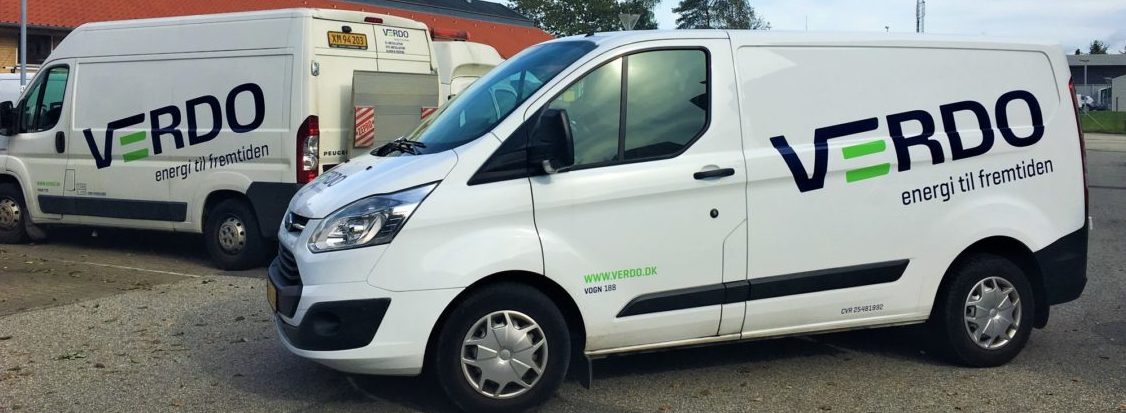
CASE STUDY
How to succeed with keeping know-how in your company
Uncertainty, errors and risk of loss of know-how and experience are among the biggest challenges when employees leave, and new ones need an introduction to tasks. Learn how to handle knowledge transfer and meet the utility Verdo, who is about to get a grip on their processes.
You probably know the challenge: An experienced and skilled colleague stops, and suddenly all know-how, responsibilities and workflows must be handed over and delegated between new hands. But all of a sudden you are at the farewell reception filled with fear thinking, “What do we do now?”
The utility Verdo from Denmark knows too well the fear of losing valuable knowledge and know-how when experienced employees either leave or retire.
“One of my colleagues is retiring. The know-how and all the processes and systems that he built up the last ten years have not been documented. It’s all in his head which makes us quite vulnerable when he retires. If he left from one day to the next, we would face a major problem,”
Fredrik Bentsen, energy engineer in Verdo.
The missing processes for knowledge transfer caused challenges when Fredrik Bentsen joined Verdo.
“There have been lots of frustrations and situations, that could have been avoided,” Fredrik Bentsen says and continues:
“Some tasks I didn’t know how to handle. It would have been nice if someone had written these down and shown me how to do. There have been vocal instructions, but nothing has been documented on how things should be done”.
But Fredrik and Verdo are not alone when it comes to facing challenges with insufficient knowledge transfer. Studies show that it is a critical problem.
Five classical challenges with insufficient knowledge transfer:
- Studies from SHRM Foundation show that poor knowledge sharing creates uncertainty, dissatisfaction and distress among new employees.
- Without a standardised way to transfer knowledge, new employees get a bad impression of the company which cause that almost one third of all newly appointed quit within the first six months.
- The productivity gets poor when knowledge transfer is missing. Newly appointed are more than 50% more productive if they get a comprehensive introduction.
- Without an introduction more errors occur, and new employees make bad decisions because they are not fully briefed to their tasks.
- A high rate of turnovers implies that companies spend an inappropriate high amount of time on introduction and knowledge transfer which is a waste of time if the knowledge sharing is not done properly in the first place.
Documentation can be vital
So how to improve the knowledge transferring and sharing of knowledge? Studies point that more than 69% of newly appointed are more prone to stay in their new position for more than three years if they were taken through a standardised introduction process.
Besides a greater satisfaction among new employees, well-documented processes reduce the stress level in workplaces because responsibility of errors can be backtracked to the processes instead of blaming employees.
Standardised processes are anything but innovative. Especially in life-threatening tasks we would not dream of working without crystal clear, documented procedures.
Let us look into a process of surgical operation at a hospital. To make sure the operation gets successfully completed and as painless as possible, it is important that all doctors, surgeons and assistants know precisely what to do and who has the responsibility for what. This makes the operation safer and more effective.
By putting tasks in order, you can easily identify and prioritize the most important tasks. It is also easy to track errors by finding out where in the process the error occurred and then fixing it to make sure it will not happen again.
A newly qualified doctor or nurse do not have to reinvent the wheel when performing her first operation – She can simply follow the already optimised procedure.
Higher growth with processes
Thus, documentation safes life but also makes growth increase. Errors are being decreased by reducing stress and providing each employee with the best prerequisites to perform. This both diminish expenses connected to errors, but it also implies better customer experiences. All this will be present in the bottom line.
Based on this Verdo has reached the realization that they need to start a process documentation journey. They have chosen the process mapping tool Gluu for this purpose because in Gluu you can easily document, delegate and standardise workflows, tasks and responsibility.
“You have to ask yourself: What tasks am I doing today? How many processes can be improved to make our work day more productive?”
Fredrik Bentsen, energy engineer in Verdo
Besides the knowledge transfer process Verdo has went through their workflows and now they experience more productivity in their work. By using the tool Gluu Verdo reaches the following five benefits:
- The possibility to manage roles and processes from one joined platform. In this way it gets visible to everyone where responsibility and tasks are placed.
- Documenting knowledge makes it easy to grasp how each task is structured, why it is important, who is responsible and how it should be done.
- Tasks can be put into system so that repeated tasks and registrations are performed, monitored and archived in time.
- Problems and ideas can be captured along the way. This makes it possible to make ongoing improvements while documenting them.
- When each employee knows her responsibility and tasks, the company will face trust, satisfaction and well-being to a higher extend because you save time and decrease stress and errors.
Does your company know how to keep know-how within the company? If not – get started here.
